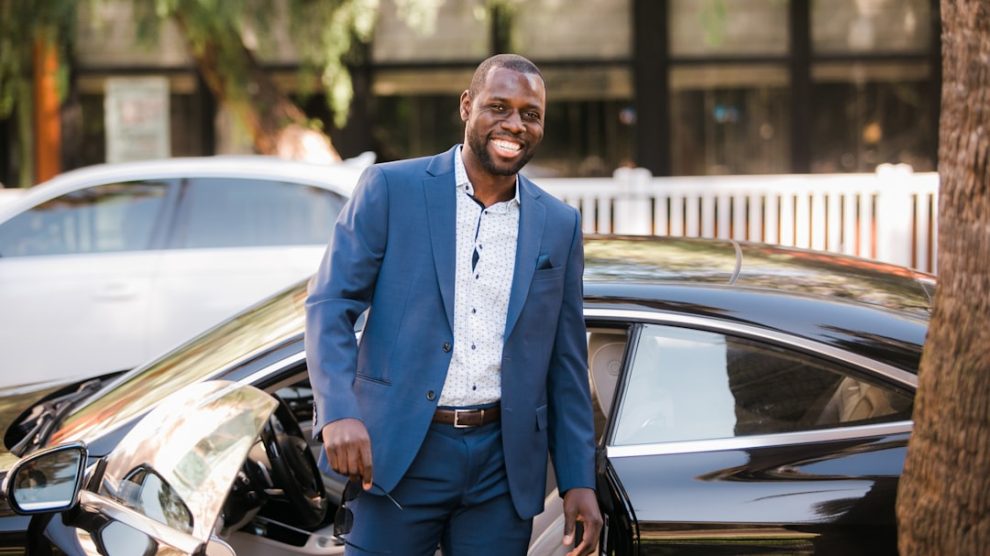The concept of Tao, often translated as “the way” or “the path,” is deeply rooted in Chinese philosophy and emphasizes harmony, balance, and the natural flow of life. When applied to public speaking, the Tao encourages speakers to align their message with their authentic selves and the needs of their audience. This alignment fosters a genuine connection, allowing the speaker to convey their ideas with clarity and purpose.
Understanding this principle is crucial for anyone looking to improve their public speaking skills, as it shifts the focus from merely delivering information to creating a meaningful exchange. In the realm of public speaking, the Tao suggests that effective communication is not just about the words spoken but also about the energy and intention behind them. A speaker who embodies the Tao of public speaking recognizes that their role is not to dominate the stage but to facilitate a dialogue.
This perspective encourages speakers to be present in the moment, attuned to both their own feelings and those of their audience. By embracing this holistic approach, speakers can create an atmosphere of trust and openness, where ideas can flow freely and resonate deeply.
Key Takeaways
- Understanding the Tao of Public Speaking emphasizes the importance of being in harmony with the audience and the environment.
- Cultivating Presence and Mindfulness involves being fully present and aware of the moment, allowing for a deeper connection with the audience.
- Embracing the Power of Silence allows for moments of reflection and emphasis, creating a more impactful speech.
- Harnessing the Energy of the Audience involves understanding and responding to the energy and emotions of the audience.
- Finding Flow and Authenticity encourages speakers to be genuine and natural, allowing for a more engaging and effective presentation.
Cultivating Presence and Mindfulness
Introduction to Presence and Mindfulness
Cultivating presence and mindfulness is essential for effective public speaking. Presence refers to the ability to be fully engaged in the moment, while mindfulness involves a conscious awareness of one’s thoughts, feelings, and surroundings. Together, these qualities enable speakers to connect authentically with their audience.
The Benefits of Being Present
When a speaker is present, they can respond to the audience’s reactions in real-time, adjusting their delivery and content as needed. This adaptability not only enhances the speaker’s credibility but also fosters a more interactive and engaging experience for the audience. Mindfulness practices, such as meditation or deep-breathing exercises, can significantly enhance a speaker’s ability to remain present.
Preparing with Mindfulness Techniques
By incorporating these techniques into their preparation routine, speakers can reduce anxiety and cultivate a sense of calm before stepping onto the stage. For instance, taking a few moments to breathe deeply and visualize a successful presentation can help ground a speaker in the moment. This practice not only alleviates nervousness but also allows them to focus on delivering their message with clarity and confidence.
Delivering with Confidence
With the help of mindfulness practices, speakers can develop the skills needed to deliver their message with confidence and poise. By being fully present and engaged, they can connect with their audience on a deeper level, conveying their message in a clear and compelling manner. This, in turn, can lead to a more successful and effective public speaking experience.
Embracing the Power of Silence

Silence is often overlooked in public speaking, yet it holds immense power. Embracing silence allows speakers to create emphasis, give their audience time to absorb information, and establish a rhythm in their delivery. A well-placed pause can enhance the impact of a statement, allowing it to resonate more deeply with listeners.
For example, after delivering a poignant point or statistic, pausing for a few seconds can invite reflection and engagement from the audience, making them more likely to internalize the message. Moreover, silence can serve as a tool for managing pacing and controlling the flow of a presentation. By intentionally incorporating pauses, speakers can prevent themselves from rushing through their material, which often leads to confusion or disengagement.
This technique also provides an opportunity for speakers to gather their thoughts and maintain composure during moments of uncertainty. In essence, silence becomes a powerful ally in public speaking, transforming what could be a chaotic delivery into a composed and impactful experience.
Harnessing the Energy of the Audience
The energy of an audience is a dynamic force that can significantly influence the effectiveness of a presentation. Skilled speakers learn to read this energy and adapt their approach accordingly. Engaging with the audience—through eye contact, gestures, or even direct questions—can create a reciprocal flow of energy that enhances the overall experience.
For instance, if a speaker senses enthusiasm or curiosity from the audience, they might choose to elaborate on certain points or invite questions to foster deeper engagement. Additionally, understanding the collective mood of an audience allows speakers to tailor their content and delivery style. If an audience appears restless or disengaged, a speaker might incorporate interactive elements such as polls or anecdotes to recapture attention.
Conversely, if the audience is highly receptive, the speaker can delve deeper into complex ideas or share personal stories that resonate on an emotional level. By harnessing this energy effectively, speakers can create an environment where ideas are not just presented but actively explored and discussed.
Finding Flow and Authenticity
Finding flow in public speaking refers to achieving a state where thoughts and words come together seamlessly, creating an engaging narrative that captivates listeners. This state is often characterized by spontaneity and ease, allowing speakers to connect with their material on a deeper level. To achieve this flow, speakers must first embrace authenticity—being true to themselves and their message.
Authenticity fosters trust between the speaker and the audience; when speakers are genuine in their delivery, listeners are more likely to engage with and believe in what they are saying. To cultivate flow and authenticity, speakers should draw from personal experiences and insights that resonate with their message. Sharing stories that reflect their journey not only humanizes them but also creates relatable touchpoints for the audience.
For example, a speaker discussing resilience might share a personal challenge they overcame, illustrating their points with real-life examples that evoke empathy and connection. This approach not only enriches the presentation but also encourages audience members to reflect on their own experiences in relation to the topic at hand.
Utilizing Nonverbal Communication

Nonverbal communication plays a crucial role in public speaking, often conveying more than words alone can express. Body language, facial expressions, gestures, and posture all contribute to how a message is received by an audience. A confident stance or open gestures can enhance credibility and invite engagement, while closed-off body language may create barriers between the speaker and listeners.
Understanding how to effectively utilize nonverbal cues can significantly elevate a speaker’s impact. For instance, maintaining eye contact with various members of the audience fosters a sense of connection and inclusivity. It signals that the speaker values their presence and input.
Additionally, varying vocal tone and pace can emphasize key points and maintain interest throughout the presentation. A speaker who incorporates dynamic nonverbal communication not only reinforces their message but also creates an engaging atmosphere that encourages active participation from the audience.
Navigating Nervousness and Anxiety
Nervousness is a common experience for many public speakers; however, it can be managed effectively through various strategies. Recognizing that anxiety is a natural response can help speakers reframe their mindset before taking the stage. Instead of viewing nervousness as a hindrance, it can be seen as an indication of excitement or passion for sharing one’s message.
This shift in perspective allows speakers to channel their energy positively rather than allowing it to overwhelm them. Preparation is key in navigating nervousness; thorough practice can instill confidence in speakers as they become familiar with their material. Techniques such as visualization—imagining oneself delivering a successful presentation—can also be beneficial in reducing anxiety levels.
Additionally, grounding exercises like focusing on one’s breath or engaging in positive self-talk can help calm nerves before stepping onto the stage. By employing these strategies, speakers can transform anxiety into an asset that enhances their performance rather than detracts from it.
Integrating Taoist Principles into Public Speaking
Integrating Taoist principles into public speaking involves embracing concepts such as simplicity, humility, and harmony within one’s delivery. Simplicity encourages clarity in communication; by distilling complex ideas into digestible messages, speakers can ensure that their audience grasps key points without feeling overwhelmed. This principle aligns with the Taoist belief in finding beauty in simplicity—a notion that resonates deeply in effective communication.
Humility plays an equally important role; recognizing that public speaking is not solely about self-promotion but rather about sharing knowledge fosters a more authentic connection with audiences. When speakers approach their presentations with humility, they invite collaboration rather than competition, creating an environment where ideas can flourish collectively. Lastly, striving for harmony within one’s delivery—balancing verbal content with nonverbal cues—ensures that messages are conveyed cohesively and resonate on multiple levels.
By weaving these Taoist principles into public speaking practices, individuals can cultivate a more profound connection with their audiences while enhancing their own skills as communicators. The journey toward mastering public speaking becomes not just about technique but also about embodying values that promote understanding and connection among all participants involved in the exchange of ideas.
FAQs
What is the Tao of Public Speaking: Effortless Communication?
The Tao of Public Speaking: Effortless Communication is a concept that emphasizes the natural and effortless approach to public speaking and communication. It draws inspiration from the Taoist philosophy, focusing on being in harmony with oneself and the audience.
What are the key principles of the Tao of Public Speaking?
The key principles of the Tao of Public Speaking include being present in the moment, speaking from the heart, connecting with the audience, and embracing authenticity and spontaneity in communication.
How does the Tao of Public Speaking differ from traditional public speaking techniques?
The Tao of Public Speaking differs from traditional public speaking techniques by emphasizing a more natural and intuitive approach to communication, rather than relying on rigid structures and formulas. It encourages speakers to trust their instincts and connect with the audience on a deeper level.
What are the benefits of applying the Tao of Public Speaking?
Applying the Tao of Public Speaking can lead to increased confidence, improved connection with the audience, and a more authentic and engaging speaking style. It can also help reduce anxiety and stress associated with public speaking.
How can one learn and practice the Tao of Public Speaking?
One can learn and practice the Tao of Public Speaking by studying Taoist philosophy, mindfulness practices, and communication techniques that emphasize authenticity and connection. It also involves cultivating self-awareness and developing a deep understanding of one’s own communication style.









Add Comment